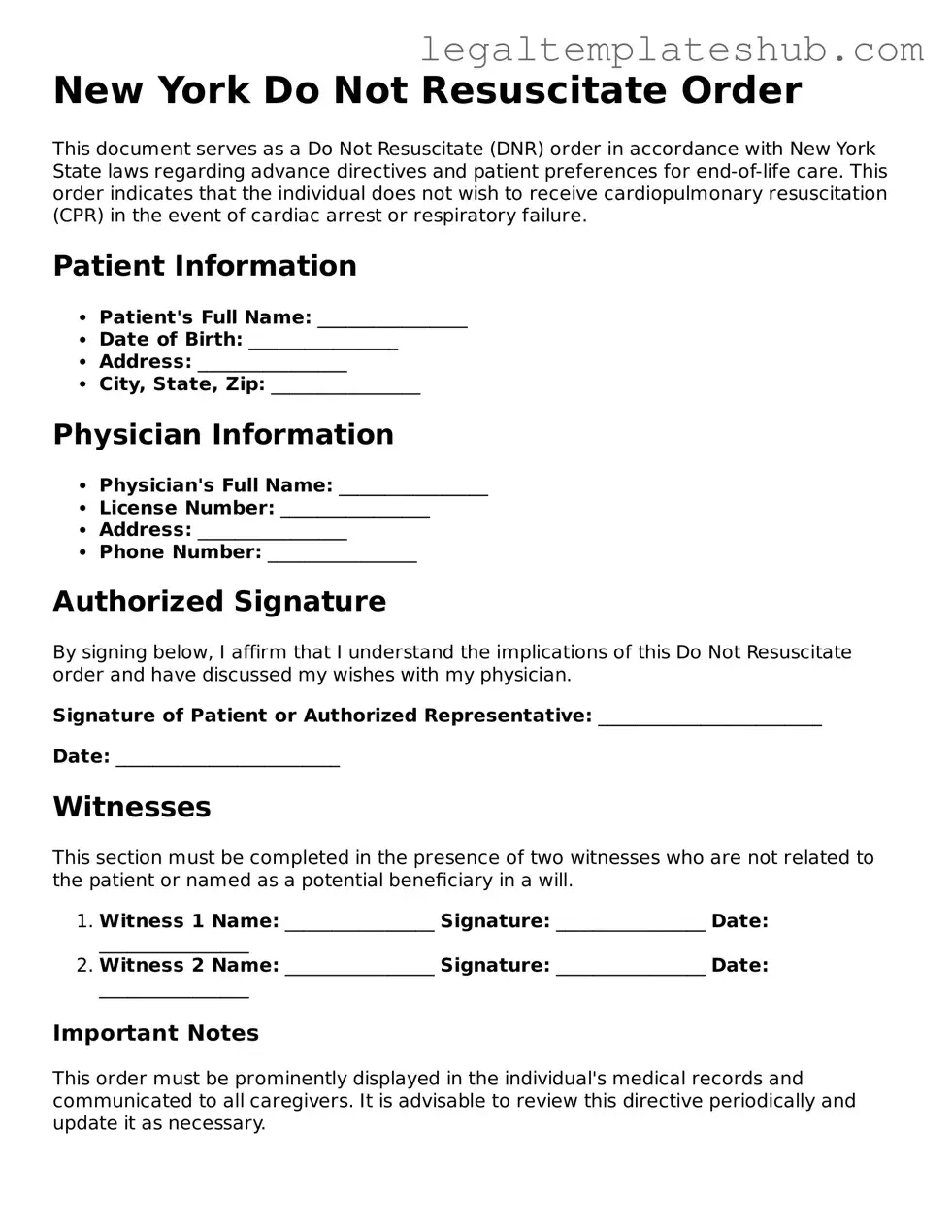Printable Do Not Resuscitate Order Document for New York
A New York Do Not Resuscitate Order (DNR) form is a legal document that allows individuals to refuse cardiopulmonary resuscitation (CPR) in the event of a medical emergency. This form ensures that a person’s wishes regarding life-sustaining treatment are respected by healthcare providers. Understanding how to properly complete this form is essential for anyone considering their end-of-life care options.
Take control of your healthcare decisions today. Fill out the DNR form by clicking the button below.
Access Editor
